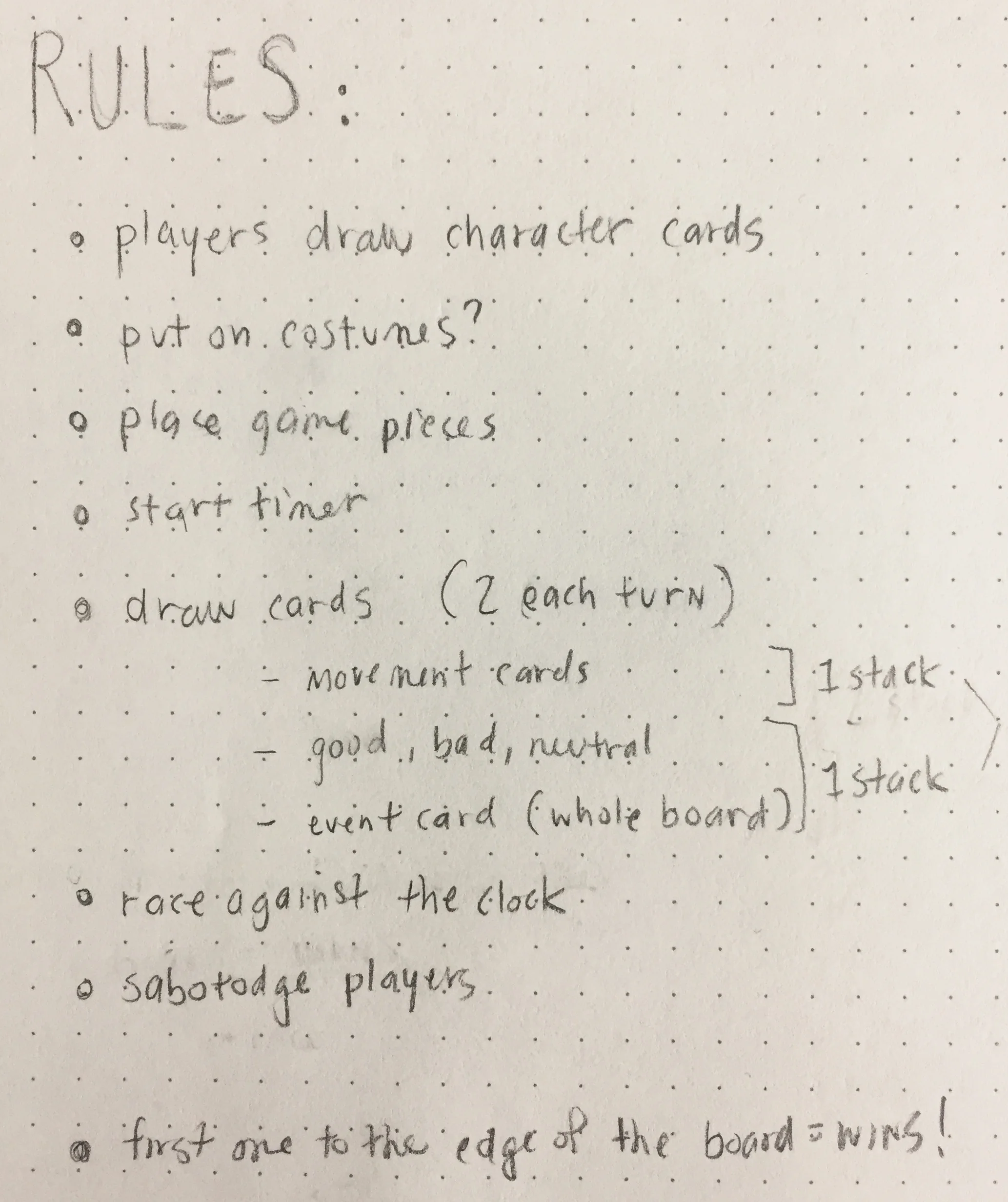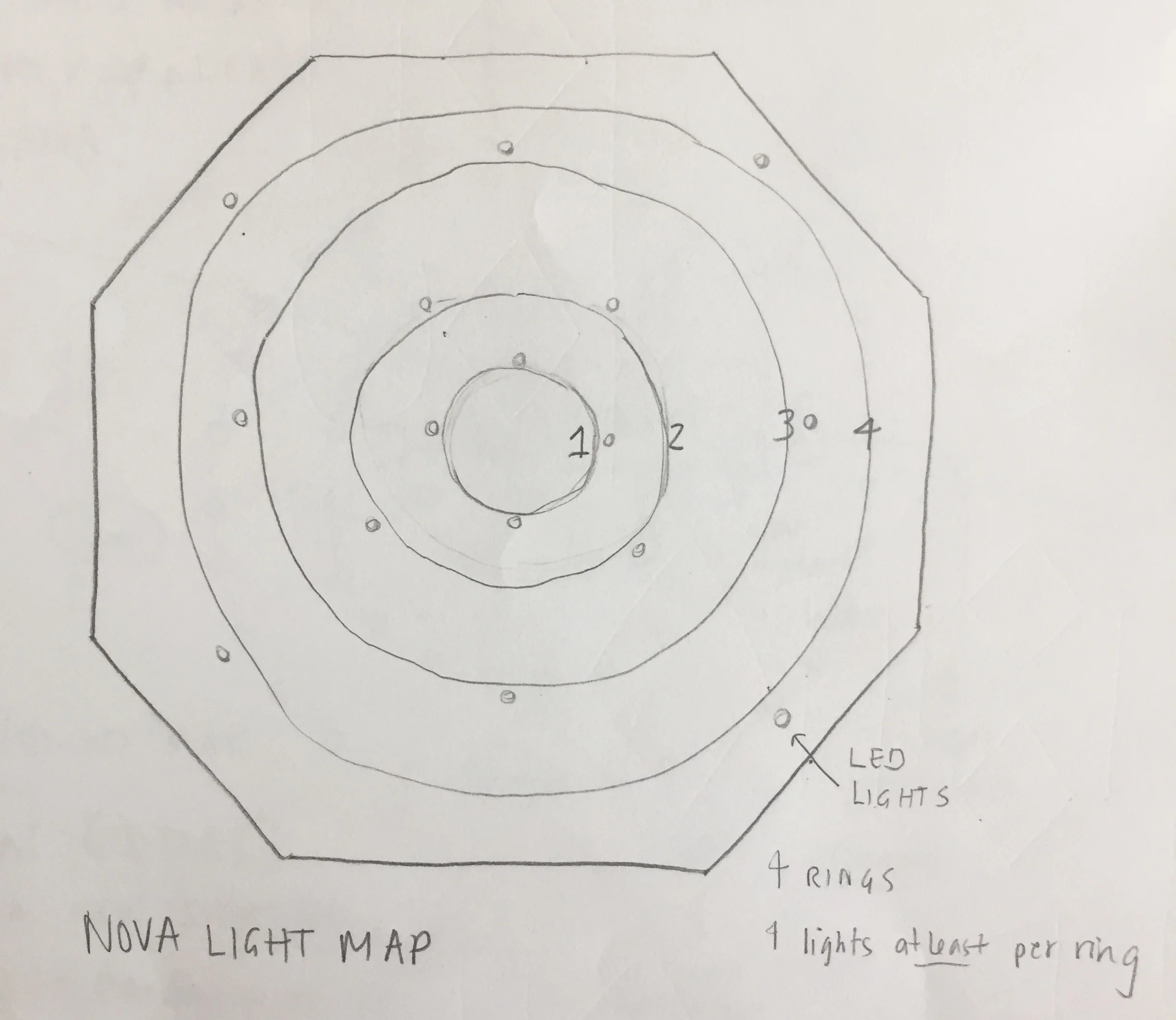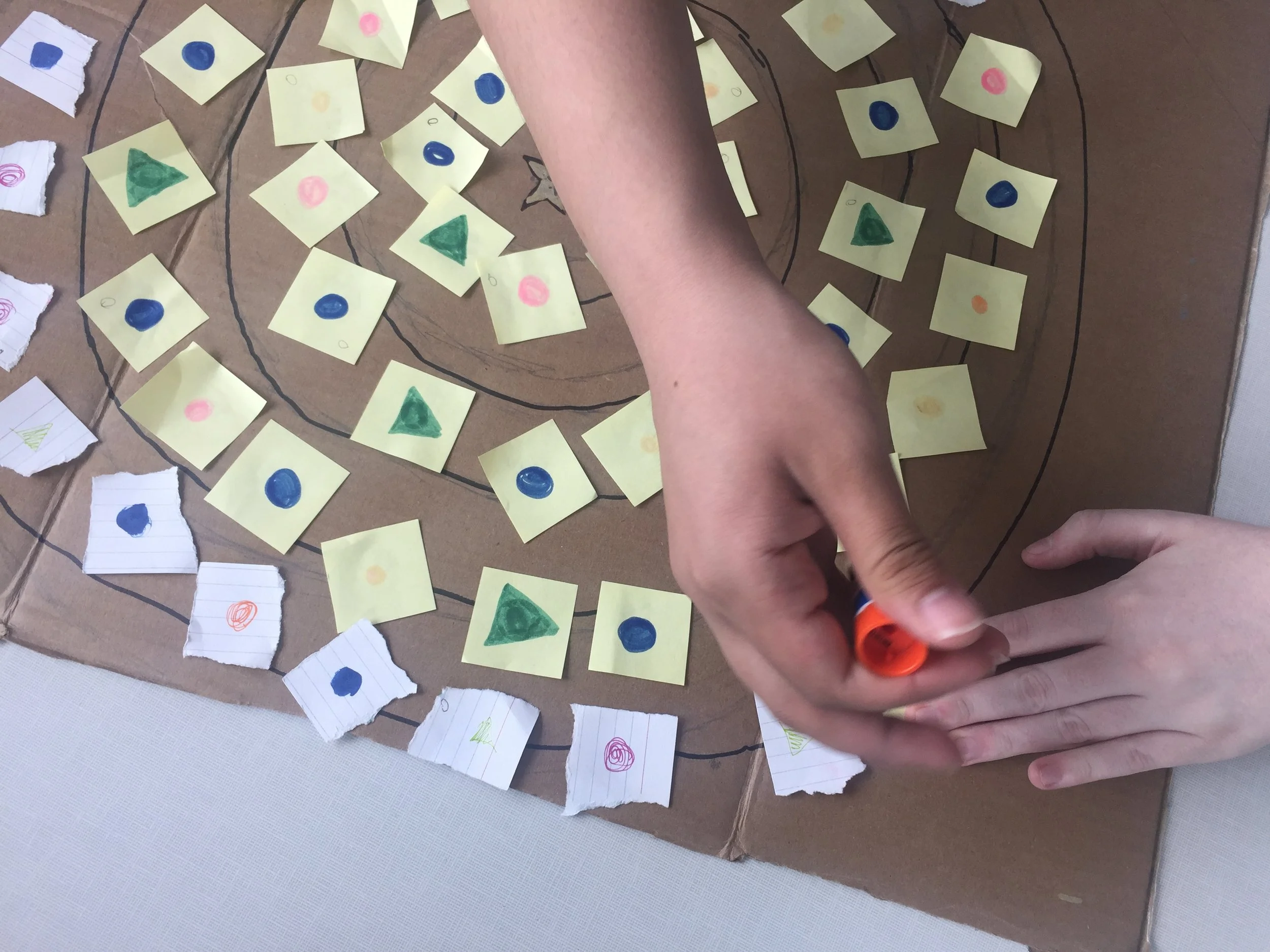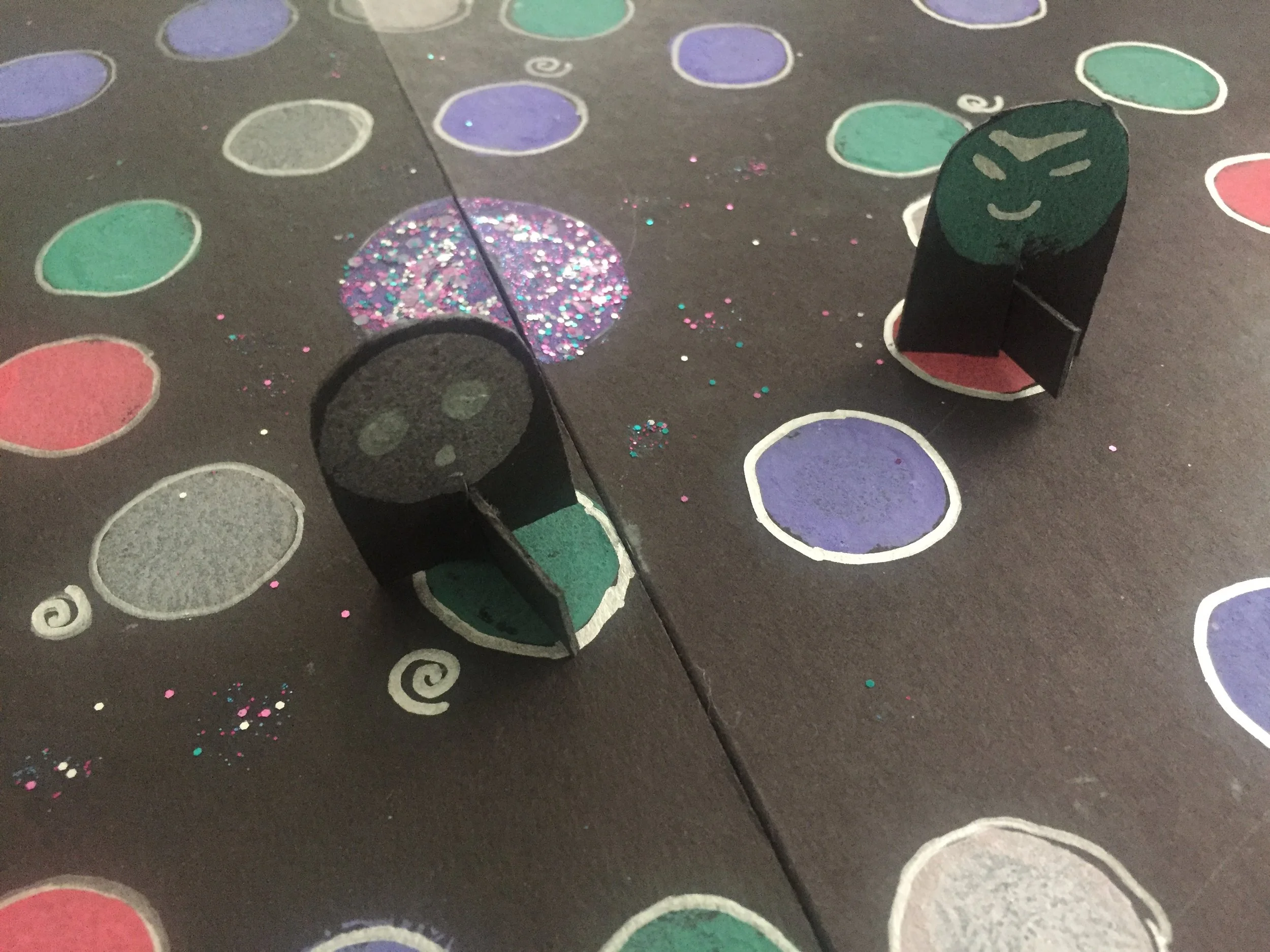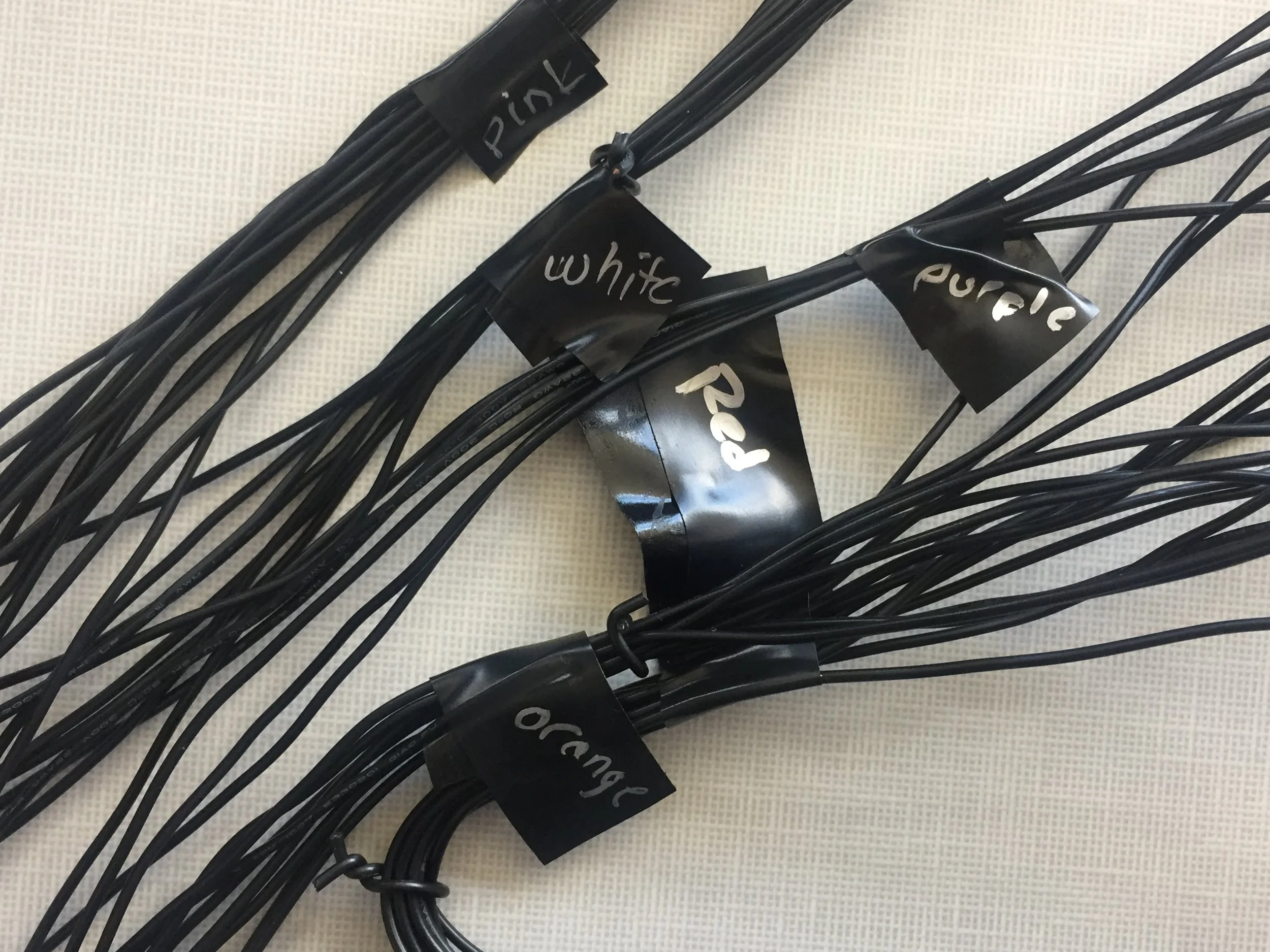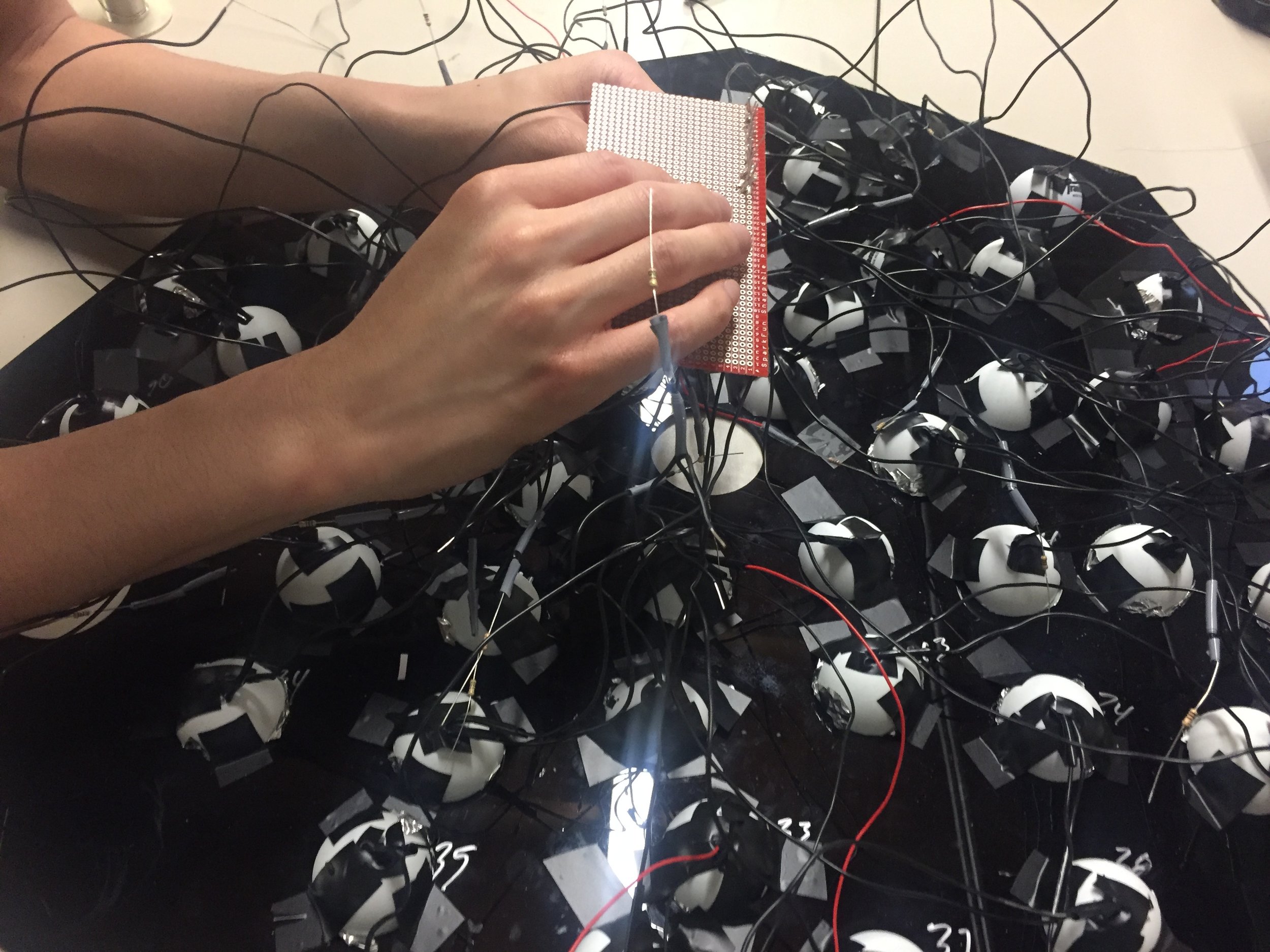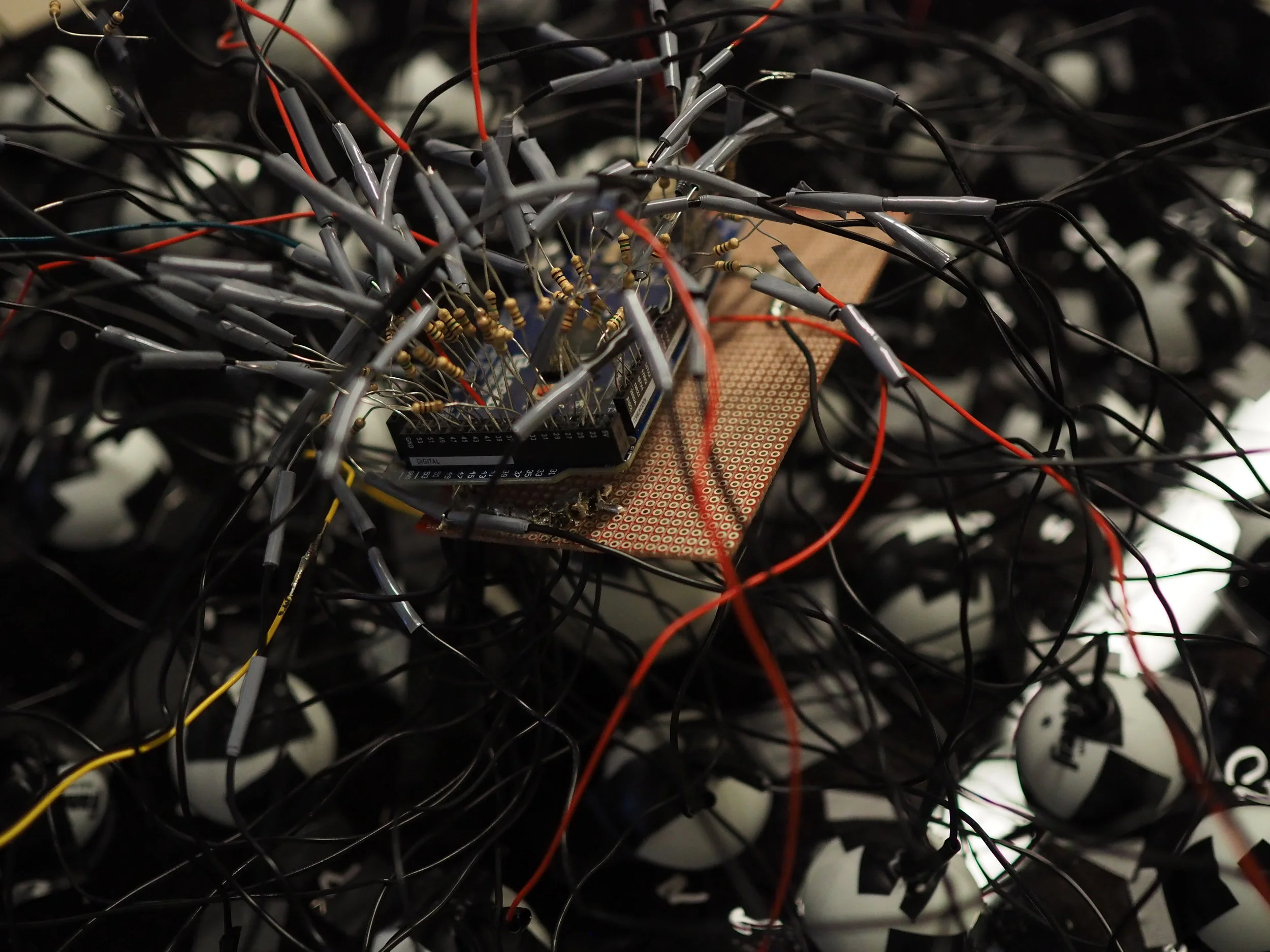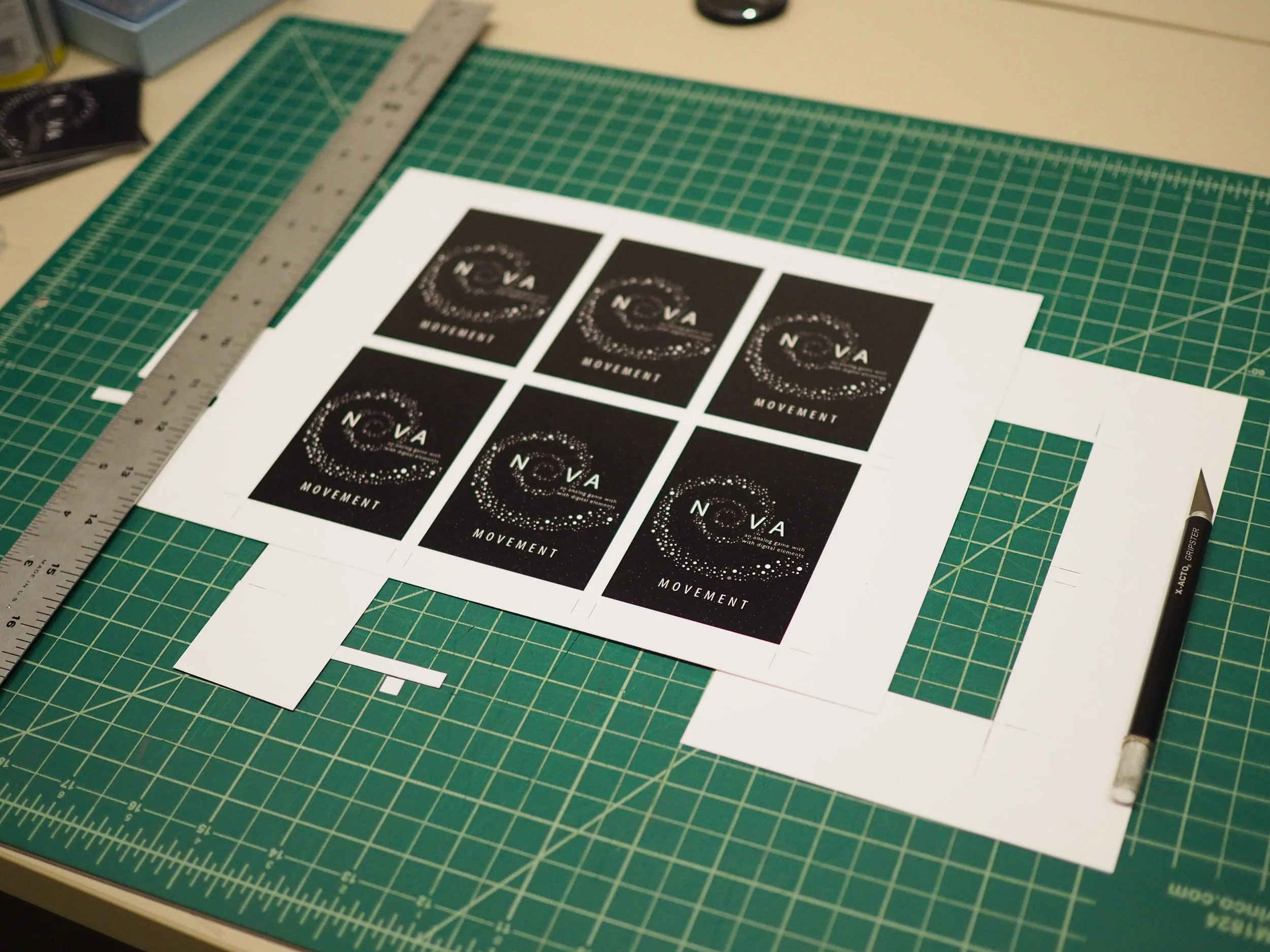
Nova
Group Project
Project Type: UI/UX Design, Arduino, Game Development
Role: UX Design, Development, Project Manager
Summary: A three month assignment at University of Washington. Our intention was to make a game with the theme of Astrology, that used both digital and analog elements on the platform of our choosing.
DesigN + Ideation
The design of Nova started with a lot of brainstorming, ideation and play. It turns out in order to make a game, you need to play some games. As a team, our first assignment to each other was to bring in a game we all loved (digital or analog). After a few hours, it became apparent who in our group was competitive, who among us relied on strategy, who frequently used alliances, and the one consistent cheater.
It was an incredible icebreaker and allowed the team to bond very quickly.
We concluded that we wanted to make a board game. Something tangible and social. We wanted to take all the different types of players listed above and make a game that aligned with each style in a unique way.
The next team assignment was to take these concepts and make a low fidelity design of a game. We would regroup in a week and vote which we wanted to move forward with. Luckily, we chose my design.
I proposed a game in which you were not only playing against the other players, but also the board itself (this eventually took the form of Super Nova, that would explode and expand, taking out players each turn). I presented my sketches (above), and immediately everyone got onboard and started coming up with rules and ideas.
Paper prototyping
Our group discussed how movement and gameplay would flow. Possible cards, how timing might work, what motivates the players, how many players, etc. We toyed with different numbers of game spaces and different numbers of cards. How many it took to make the game not too easy and also not too challenging. The timing and function of the Nova was changed dozens of times.
In our first and second iteration, the Nova was one of the players. There were five players, four aliens and one SuperNova. The person playing the Nova would move just like any other player, but the motivation would be to take out the other players before they reached the finish.
Board design + Playtesting
Once our mechanics were in place, we needed to create a more functional board and have as many people play the game as possible.
The feedback was incredibly positive and we had lines of classmates waiting to play. We had successfully made a game that was half luck and half strategy, while aiding those who prefer alliances and equally those who enjoy scheming.
Building the board
Below are a lot of images of the creation of our final board. It is made from a acrylic sheet, that we cut down. We used a laser cuter to create the game spaces and to fit the clear plastic over the lights. This required a lot of time in our maker space, cutting and also soldering.
Wiring the board
We wired LED lights using a circuit board and programmed the lights to turn on and off. When the the center/first game space was pressed for more than 2 seconds, we used an algorithm to turn 2-5 lights off at random. When the same game space was pressed for 3 seconds or more, all of the lights would return for the next game.
Card Design
It was important to make the experience of our game as real as possible, so it was imperative that each element was done near-professionally. We created a logo and graphic designs for each type of card, then printed them on card stock with a semi gloss finish.
GamePlay
reflection
This has by far been the most thrilling project I've participated in. It challenged me as a strategist, designer and leader. I accidentally took on a project manager/creative lead role, and it allowed me to get to know my team in a different way than I had in previous projects. In this three month development, I've learned that successful products come from a healthy and fun environment. Also, play is important.


